Review for Dad’s Monster House
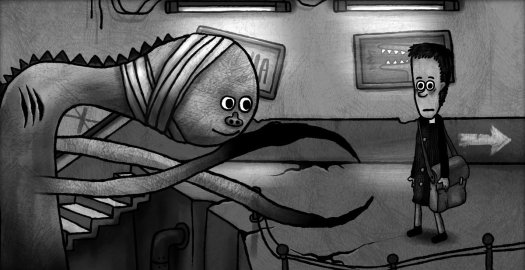
From the surrealist puzzle adventures in Isoland to the fantastical slice-of-life vignettes in One Way: The Elevator, CottonGame has been learning and growing with each game throughout its eight years of existence. Dad's Monster House is another important step in the evolution of this scrappy little Chinese studio. If you've played one of their games before, you will find familiarity in their clue-hunting puzzle design and bizarrely cute hand-drawn artwork. Where this game begins to tread new ground, however, is in its attempt to build a full-on narrative to go with them. If you've never played one of the indie developer’s games before, Dad's Monster House will be a good measure of your taste for their strange characters, a mix of casual and logic puzzles, and an eerie yet charming art style. It's creepy, adorable, and heartwarming while still being challenging enough to satisfy any adventuring urges you may have, even if the casual style and some of the frustrating logic puzzles may turn some off.
In the opening cutscene, told in animated comic-book-style panels, a young man named Carlos receives an unsettling phone call from his father, then takes off in his beat-up car to a creaky old mansion in the middle of the woods. We take control of Carlos in the house's foyer as he steels his courage to begin exploring. A diary on the ground turns out to be the guiding light of the game as the protagonist picks it up to see his father wrote it. Within it is a catalog of experiments his father has been conducting in the house. It also contains personal notes about his life and family, many arcane drawings, pictures, and, frustratingly, a weird little spider that latches onto the book and refuses to let you read beyond the first ten pages.
The game then centers on you wandering from room to room trying to find your dad and piecing together the story of what happened to him—obstacles and puzzles bar many doors and ladders and elevators and the like. The elevator needs a missing gear to operate. A door is locked with a series of switches that must be arranged in a particular way. To fully explore the house, you must use your wits and crucial hints scattered about or contained within the journal, more pages of which are unlocked by finding a bunch of “DNA pills” hidden around the environment. Picking one up automatically feeds the pill to the irksome spider, causing the little guy to crawl deeper into the diary and allowing you to read further.
Dad's Monster House uses a single cursor to move the character. If you walk close to something interactive, a little symbol will appear above it, letting you know if it can be either zoomed in on for a closer look, operated, or picked up and stored for later use in your collapsible inventory. The game has a unique note-taking system and a house map with small icons to remind you of what's in each room. Like many of the studio’s other games, this one contains a full-screen overlay that can be opened anytime. In it, there are a pen and eraser with which you can draw little notes or pictures for yourself to review later. Many times you may come across a pattern or a number on a wall that will need to be replicated to solve a later puzzle, so instead of having to grab a pen and paper in real life to scrawl down the positions of a series of dials or a string of arcane symbols, you can just draw them right on the screen. Later, you can open the overlay, and everything you've drawn will be there over your paused game screen. It's a handy CottonGame staple that genuinely lightens the load of this particular style of puzzle design.
The story is told linearly because no matter what DNA pills you find, the journal always unlocks in the same order. The puzzles, however, can be approached in a very non-linear fashion. There's never really any part where you’ll get stuck in a particular room or space, and while the diary can provide helpful clues, it rarely (if ever) provides a solution itself. The open-ended design can be a blessing and curse. A blessing because if you're stuck on one puzzle, you can hop off to another corner of the mansion and solve another. The gameplay isn’t entirely non-linear, as sometimes one puzzle solution is gated behind another, such as a locked box that contains an item one of the strange tenants of the house demands. This represents the curse: with a puzzle environment so wide open, if you become stuck, you can’t be sure if you're lacking all the relevant information or if you're just not thinking it through properly. The map is large enough – around thirty-odd rooms – that searching for something you may or may not have missed can become tedious.
The puzzles come in a variety of difficulties. The most significant chunk is inventive locks with hidden codes. As you walk around the house, you tend to see strings of letters and numbers or weird images on walls or other places. Each corresponds to some lock or mechanism, and the clues you found will be needed to solve it. These can be as simple as a password or as complex as a confusing view of a three-dimensional figure that needs to be replicated in two dimensions.
There are mini-games that tend to require more thought than skill, logic brainteasers that can be incredibly challenging, and inventory obstacles that can be pretty obtuse sometimes. Still, the game generally telegraphs what objects are needed in some way or another, and as long as you're observant, you can figure it out. Dad’s Monster House has almost no dialogue, but if a creature wants a hat, it will telegraph that by looking sadly at another character who has a hat. There's often not a ton of logic to what motivates the characters you encounter in the house, but what they want from you should generally be straightforward. The logic puzzles, however, can require a lot of out-of-the-box thinking or trial-and-error, which can be both incredibly satisfying when you succeed, or extremely frustrating as you stare at the screen, wracking your brain for a solution.
We learn early on that the characters Carlos meets are all former experiments of his father’s. Each is some kind of humanoid mixed with another creature or inanimate object, like an onion, dough, or an alligator. While the game is styled like a horror game, none of these monstrosities come across as scary. Most of them just seem weird or silly or cute. The diary will always give more insight into where each character came from and their personalities, but in the game itself, they’re pretty flat and one-dimensional. If you don't read the diary, then any given character might as well just be a sign on the wall that says “give hat” or whatever the objective might be.
That’s not to say there isn't an intriguing story to be uncovered in the three or so hours spent playing Dad's Monster House. The diary is genuinely a fascinating character study of a man who has sacrificed everything for his work and the regrets he's left with. The shades of pathos implied by each new experiment can be heartbreaking if you read it all. The problem is that the narrative doesn't seep into the gameplay itself until the final moments, where the two possible endings each result in a thematically engaging conclusion. Before that point, it feels like you're solving a big mansion-sized puzzle adventure and occasionally pausing to read an interesting book.
When you begin Dad's Monster House, you may be inclined to think you're in for a genuine horror experience. The intro sequence creates a lot of good tension and atmosphere. Upon entering the mansion, the predominantly monochromatic color palette, the intermittent creaks, moans, and footsteps within the house itself, accompanied by Carlos's nervous trembling, all set up an experience poised to provide some real scares. That's about where it ends, though. You are welcome to walk through the house from that point on freely, and while the hybridized creatures are shocking at first, they just sit there and mumble innocently. When you walk past them or interact with them with little shock or surprise, any suspense you might have felt fades away. If you expect horror, you're likely to be disappointed. Instead, the experience feels campier, in contrast to the sound design's tone.
There is little to no music in the entire game, but the house sounds are genuinely the only spooky part of the game. Every room has a distinct sound and "feel" that makes the house seem alive. When you enter a room with a window, the wind howls outside, and you hear the muffled sound of crickets. As you move further into the house, the audio fades away, leaving only the buzzing of flickering light. It all helps to pull you into the world; even the noises of buttons, switches, and dials add a sense of satisfaction to working on each puzzle.
The artwork is also excellent, with each cartoony background effectively communicating its intended mood. The entire house has an unearthly feeling that can be unsettling, even if all the characters read much more as “cute” than “scary.” The whole game is black and white with occasional bits of red, sketched with solid illustrative lines and textures that look like they were hand-drawn with charcoal. In typical CottonGame fashion, the walls are adorned with references to 20th-century philosophers, scientists, poets, and mathematicians, as well as nods to their other games. It's an odd signature, but it works in a game about exploring the house of a scientist who became disconnected from the rest of the world.
While mostly limiting its narrative to diary entries, Dad's Monster House follows up its main story with a brilliant coda. If you finish the game with the “good” ending (there are two different endings dependent entirely on the final few minutes), you get a post-game sequence that has you retread every area of the house on a seek-and-find adventure of sorts. Without giving too much away, each room presents a single variation on this idea, deepening the story's emotional context upon completion. It turns every room in the game into a thematic piece of the larger story. The additions, along with a beautiful piano score that plays over the top of it all, are incredibly moving and will leave you with a deeper appreciation of the game, its characters, and its story.
All in all, Dad's Monster House is another solid weird puzzle game from CottonGame. The narrative, contained almost entirely in prose in the in-game diary, never feels properly integrated yet still manages to create a moving picture of one man's struggle to balance his work and personal life. The art, as always, shows off the studio’s oddly cute illustrative style. While it doesn’t seem as well-suited to a horror premise that isn’t scary, the sound design will make you feel like you're actually in the secluded house of a mad scientist and his creations. This somewhat short and surreal puzzle-adventure game will be certain to stir your thoughts and emotions, testing your mental acuity and giving you plenty to ponder afterward (mainly if you stick around for the post-credit sequences!).









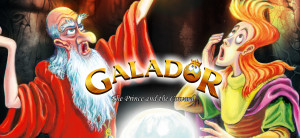
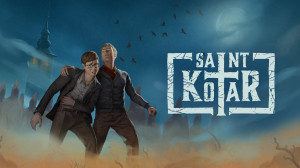



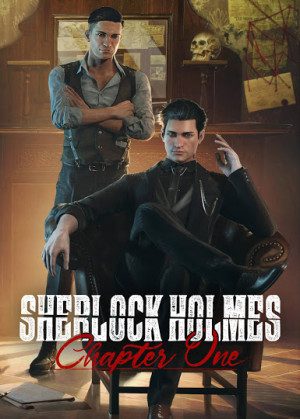

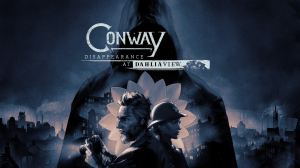



__small.jpg)







